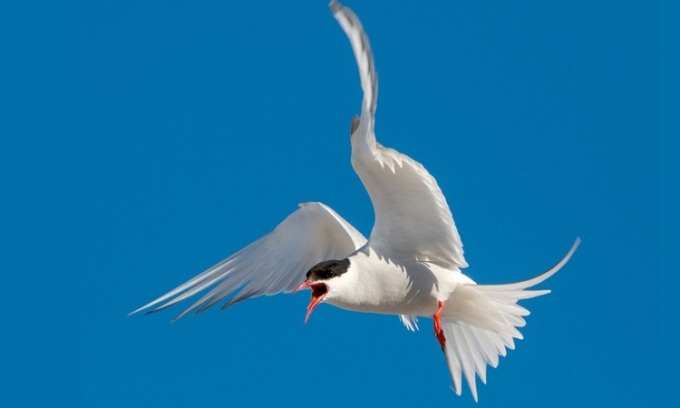The Arctic tern is the record holder for the longest migration distance, with a round trip of approximately 70,900 km.
Migration is a large-scale, regular movement observed in many species across the animal kingdom, from insects to mammals and birds. Animals become nomadic, traveling in pursuit of food and ideal habitat. Driven by seasonal changes, resource needs or reproductive goals, these migrations are a fascinating demonstration of survival instinct. Migratory species exhibit unique adaptations to their journeys, from physical features such as long wings in birds to streamlined bodies in marine organisms, aided by behavioral strategies. Migratory animals play an important role in nutrient distribution, pollination, seed dispersal, and help shape predator and prey populations, according to Interesting Engineering .
Arctic Swallow
Average round-trip migration distance: 70,900 km

Arctic terns are the longest migratory birds. Photo: AWeith
The Arctic tern, a medium-sized bird, has the longest migration in the animal kingdom . With a circumpolar breeding range that spans the Arctic and subarctic regions, the 86-127 kg (190-280 lb) terns travel an astonishing round-trip. Recent research has revealed that the average annual migration is 70,900 km (45,000 miles) for nests in Iceland and Greenland and 48,700 km (30,000 miles) for nests in the Netherlands. The birds migrate from their northern breeding grounds to coastal Antarctica, spending two summers each year.
Their journeys demonstrate unparalleled endurance and navigational skills. In particular, they can navigate winding routes to take advantage of wind directions. Arctic terns combine astronomical and environmental factors to navigate, demonstrating an innate ability to navigate huge distances with extraordinary precision. Despite the challenges of natural obstacles and human threats, terns continue to migrate regularly each year.
Striped Tailed Straight Beaked Catfish
Average round trip migration distance: 29,000 km
The bar-tailed sandpiper is a remarkable migratory wading bird. Breeding in Arctic coastal and tundra waters from Scandinavia to Alaska, this bird undertakes one of the longest non-stop migrations in the animal kingdom. In particular, the subspecies Limosa lapponica baueri flies more than 29,000 km round trip, the longest non-stop migration without stopping to feed. The migration includes flights from its Arctic breeding grounds to temperate and tropical coastal waters in Australia and New Zealand.
For example, in 2022, a tagged murre flew nonstop from Alaska to Tasmania, covering 13,560 km in 11 days and one hour, setting a new record. To support such long journeys, the birds build up a thick layer of fat, allowing them to fly 6,000 to 8,600 km. Conservation efforts are important because the species’ numbers are declining.
Gray whale
Average round trip migration distance: 16,000 - 22,000 km
The gray whale is one of the longest migratory marine mammals, swimming 8,000–11,000 km annually. Divided into eastern and western populations, the whale migrates between feeding grounds in the Bering and Chukchi seas and breeding and calving grounds along the western coast of Baja California and the southern Gulf of California.
The eastern population of about 27,000 migrates from Alaska to Baja California Sur. The eastern population of about 300 spends the summer in the Sea of Okhotsk. Gray whales do not have dorsal fins and their migration includes spectacular behaviors such as flying across the water.
An Khang (According to Interesting Engineering )
Source link































































![[Maritime News] More than 80% of global container shipping capacity is in the hands of MSC and major shipping alliances](https://vphoto.vietnam.vn/thumb/402x226/vietnam/resource/IMAGE/2025/7/16/6b4d586c984b4cbf8c5680352b9eaeb0)





































Comment (0)